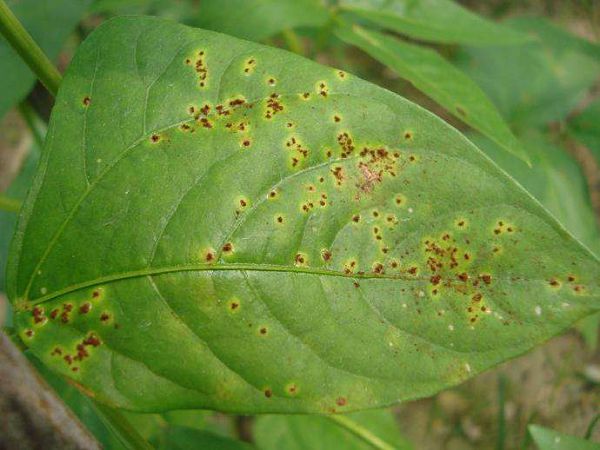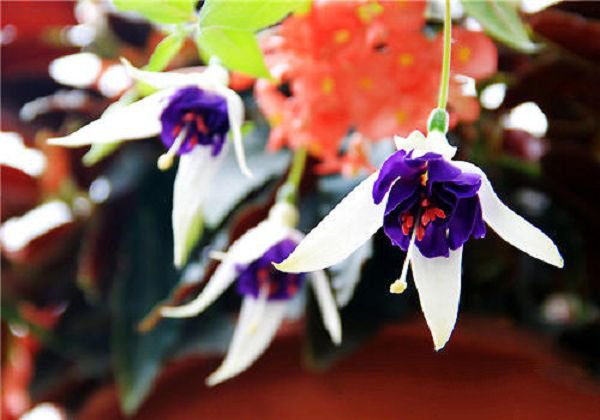Control methods of Flower Seedling Rust

Flower seedling rust is a common and serious disease in flowers and green trees. There are many kinds of rust, which mainly harms nearly 100 kinds of flowers and seedlings in gardens, such as Rosaceae, Leguminosae, Liliaceae, Gramineae, Pinaceae, Cypress, Salicaceae and so on. After the disease, transpiration and respiration are accelerated, photosynthesis is weak, growth potential is weakened, leaves turn yellow and fall off early, or cause branch tumor, fruit deformity, etc., reduce yield and ornamental value, and even die seedlings, resulting in heavy losses.
Symptom characteristics
A large number of rust-colored spore piles appeared in the diseased plants, and light green spots appeared in leaves, stems and other parts, then expanded into rust-brown blister spots, and emitted yellowish-brown powdery matter after epidermis rupture, which was summer spore pile. Some show orange to black small powder pile, for winter spore pile. Some are honey yellow to dark brown spots or granular, for the sexual spore organ.
1. Strict quarantine
Many trees with branch rust are quarantined. Seedlings should be introduced from disease-free areas and asexual reproduction materials such as cuttings and scions should be collected from disease-free mother plants.
2. Breeding disease-resistant varieties
There were significant differences in rust resistance of flower seedlings and varieties. Therefore, the breeding of rust-resistant flower seedlings is an economical and effective way to control rust.
3. reduce the source of bacteria
To control rust caused by transferred hosts, ornamental plants can be strictly isolated from transferred host plants, such as begonia, apple, pear, etc., 5 kilometers apart from the transferred host cypress, rhododendron and spruce, hemlock, Aster and so on can not be mixed planting. To control the rust caused by single host, from late autumn to early spring or during the dormant period of plants, we should thoroughly clean up the plant remains with diseases and insect pests in the garden, such as fallen leaves, fallen fruits and withered branches, and should often remove the diseased branches and leaves in the growing season, so as to reduce the source of bacteria. Apply insecticide to prevent when the spore pile is about to disperse.
4. Strengthen maintenance and management
Improve plant growth environment, improve disease resistance, improve soil improvement, enhance soil permeability, improve land fertility, and organize the garden irrigation and drainage system. Select sturdy, disease-free and insect-free branches as cuttings, scions and other asexual reproduction materials to strictly remove bacteria. Control planting density, should not be too dense. Timely elimination of stagnant water, scientific fertilization, more fully mature organic fertilizer and phosphorus and potassium fertilizer, not partial application of nitrogen fertilizer. Regular pruning, removal of disease and insect branches and weak branches, so that the garden ventilation is good; facility cultivation should strengthen ventilation and reduce the humidity in the greenhouse.
5. Chemical control
Before sprouting from the end of autumn to the following year, after cleaning the countryside and cutting diseased branches, you can spray 2-5 Baume stone sulfur mixture, or 200-300 times pentachlorophenol sodium solution, or pentachlorophenol sodium plus stone sulfur mixture mixture. In order to control the rust on the transferred host cypress, the rust should be sprayed 1-2 times in the first and middle of March in early spring to kill the overwintering spores. At the initial stage of the disease of flower seedlings, the liquid of penicillium shark, stone sulfur mixture, mancozeb wettable powder, 62.25% Xiansheng, 1000 times of methyl topiramate, or 1500 times of triadimefon. The newer agents for the control of rust are 2000-3000 times liquid of Penicillium, 12.5% diniconazole 3000-4000 times, 43% Hercules 4000-5000 times, 25% Fulicu 1000-1500 times, 25% dimethopril 1000-4000 times.
Related
- What if the leaves of potted flowers turn yellow?
- Florescence Control of several Flowers
- Anti-freezing technology and post-freezing nursing technology of flowers
- What is the classification of flowers? What are the common methods of flower classification?
- Prevention and control of alkali and acid damage of flowers in courtyard
- Technology of Anti-freezing and restoring growth of Flower seedlings in greenhouse and greenhouse
- How does flower fertilization not hurt the root? Fertilization technology of flowers
- Key points of disinfection in flower greenhouse
- Several pesticides that are banned or used cautiously in flowers
- How to fertilize the flowers that watch the leaves?



